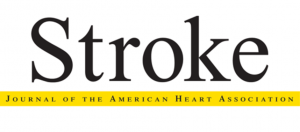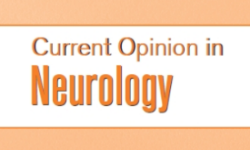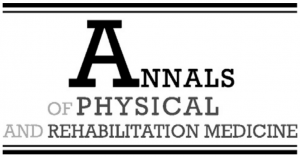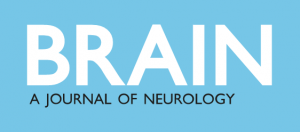Implementing the PREP2 algorithm to predict upper limb recovery potential after stroke in clinical practice: a qualitative study
This qualitative study explores how PREP2 was successfully implemented into clinical practice within the Auckland District Health Board in New Zealand. Implementation of PREP2 was initiated and driven by therapists and several key drivers of implementation were identified such as the support given to staff from the implementation team and the perceived benefits of having PREP2 prediction information
Connell LA, Chesworth B, Ackerley SJ, Smith MC, Stinear CM. Implementing the PREP2 algorithm to predict upper limb recovery potential after stroke in clinical practice: a qualitative study.
Phys Ther 2021
PREP2 algorithm predictions are correct at 2 years poststroke for most patients
This study provides evidence that PREP2 predictions made within a few days after a stroke are still accurate 2 years post-stroke (80% correct). Furthermore, the PREP2 upper limb category remained stable for 83% of patients between 3 months and 2 years post-stroke.
Smith MC, Ackerley SJ, Barber PA, Byblow WD, Stinear CM. PREP2 Algorithm predictions are correct at 2 Years poststroke for most patients.
Neurorehabil Neural Repair 2019: 1-8
DOI: 10.1177/1545968319860481 PMID: 31268414
PREP2: A biomarker-based algorithm for predicting upper limb function after stroke
This study provides evidence for the new PREP2 prediction tool, which was found to accurately predict the level of upper limb motor recovery for 75% of patients a few days after stroke. The PREP2 prediction tool is more efficient, accurate and accessible than the original PREP prediction tool.
Stinear CM, Byblow WD, Ackerley SJ, Smith MC, Borges VM, Barber PA. PREP2: A biomarker-based algorithm for predicting upper limb function after stroke
Ann Clin Transl Neurol 2017: 1-10
DOI: 10.1002/acn3.488
Prediction of motor recovery after stroke: advances in biomarkers
This review discusses the use of clinical, neurophysiological and neuroimaging biomarkers after stroke. These can be used as tools to predict recovery from motor impairment, and motor functional outcomes. They can also be used for patient selection in rehabilitation intervention trials at the subacute stage.
Stinear, CM. Prediction of motor recovery after stroke: advances in biomarkers.
Lancet Neurol 2017 16(10): 826-836
DOI: 10.1016/S1474-4422(17)30283-1 PMID: 28920888
Predicting recovery potential for individual patients increases rehabilitation efficiency after stroke
This is the first study to provide PREP predictions to patients and therapists, and evaluate the effects on therapy and outcomes. It found that using the PREP prediction tool in real-world clinical practice increased therapist confidence, modified therapy content, and reduced length of stay by one week, without any negative effects on patient outcomes or satisfaction.
Stinear CM, Byblow WD, Ackerley SJ, Barber PA, Smith MC. Predicting recovery potential for individual patients increases rehabilitation efficiency after stroke.
Stroke 2017 48(4): 1011-9.
DOI: 10.1161/STROKEAHA.116.015790 PMID: 28280137
Proportional motor recovery after stroke: implications for trial design
This study investigated whether proportional recovery from upper limb impairment occurs in patients with a functional corticospinal tract (CST), including those with intracerebral hemorrhage and previous stroke. It found that patients with responses to TMS, indicating a functional CST, made a proportional recovery from upper limb impairment. The recovery of patients without a functional CST was not proportional and was reduced by greater CST damage.
Stinear CM, Byblow WD, Ackerley SJ, Smith MC, Borges VM, Barber PA. Proportional motor recovery after stroke: implications for trial design.
Stroke 2017 48(3): 795-8.
DOI: 10.1161/STROKEAHA.116.016020 PMID: 28143920
Stroke rehabilitation research needs to be different to make a difference
This article describes ways in which the design of stroke rehabilitation clinical trials might need to change and be improved in order to more readily detect the effects of novel rehabilitation interventions. It makes the distinction between pragmatic interventions and pragmatic trial design, arguing that we need more of the latter to assist the translation of interventions into clinical practice.
Stinear CM. Stroke rehabilitation research needs to be different to make a difference.
F1000Res 2016 5: 1-5.
DOI: 10.12688/f1000research.8722.1 PMID: 27408689
Predicting and accelerating motor recovery after stroke
This invited review summarises recent research in predicting recovery of motor impairment and function after stroke, and explores whether accelerating recovery may be a more useful goal than raising the recovery ceiling.
Stinear CM, Byblow WD. Predicting and accelerating motor recovery after stroke.
Curr Opin Neurology. 2014 27(6): 624-30.
DOI: 0.1097/WCO.0000000000000153 PMID: 25364953
An update on predicting motor recovery after stroke
This invited review, published in both English and French, provides an overview of recent research on the prediction of motor outcomes.
Stinear CM, Byblow WD, Ward SH. An update on predicting motor recovery after stroke.
Ann Phys Rehabil Med 2014 (57(8): 489-98.
DOI: 10.1016/j.rehab.2014.08.006 PMID: 25200094
Rehabilitation is initiated early after stroke, but most motor rehabilitation trials are not: a systematic review
This systematic review aimed to determine the percentage of motor rehabilitation randomised controlled trials that are initiated within 30 days of stroke, and characterize these studies.
Stinear CM, Ackerley SJ, Byblow WD. Rehabilitation is initiated early after stroke, but most motor rehabilitation trials are not: a systematic review.
Stroke 2013 44(7): 2039-2045
DOI: 10.1161/STROKEAHA.113.000968 PMID: 23715959
How useful is imaging in predicting outcomes in stroke rehabilitation?
This invited review describes the prediction of motor outcomes after stroke using magnetic resonance imaging.
Stinear CM, Ward NS. How useful is imaging in predicting outcomes in stroke rehabilitation?
Int J Stroke 2013 8(1): 33-7.
DOI: 10.1111/j.1747-4949.2012.00970.x PMID: 23280267
The PREP algorithm predicts potential for upper limb recovery after stroke
This study provides preliminary data in support of the PREP prediction tool for the prognosis of upper limb recovery in individual patients.
Stinear CM, Barber PA, Petoe M, Anwar S, Byblow WD. The PREP algorithm predicts potential for upper limb recovery after stroke.
Brain 2012 135(8): 2527-35.
DOI: 10.1093/brain/aws146 PMID: 22689909
Prediction of recovery of motor function after stroke
This review describes the prediction of motor recovery after stroke, and introduces the PREP prediction tool.
Stinear CM. Prediction of recovery of motor function after stroke.
Lancet Neurol 2010 9(12): 1228-32.
DOI: 10.1016/S1474-4422(10)70247-7 PMID: 21035399
Functional potential in chronic stroke patients depends on corticospinal tract integrity
This study is the first to demonstrate the complementary nature of TMS and MRI techniques in predicting functional potential in chronic stroke patients.
Stinear CM, Barber PA, Smale PR, Coxon JP, Fleming MK, Byblow WD. Functional potential in chronic stroke patients depends on corticospinal tract integrity.
Brain 2007 130(1): 170-80.
DOI: http://10.1093/brain/awl333 PMID: 17148468











